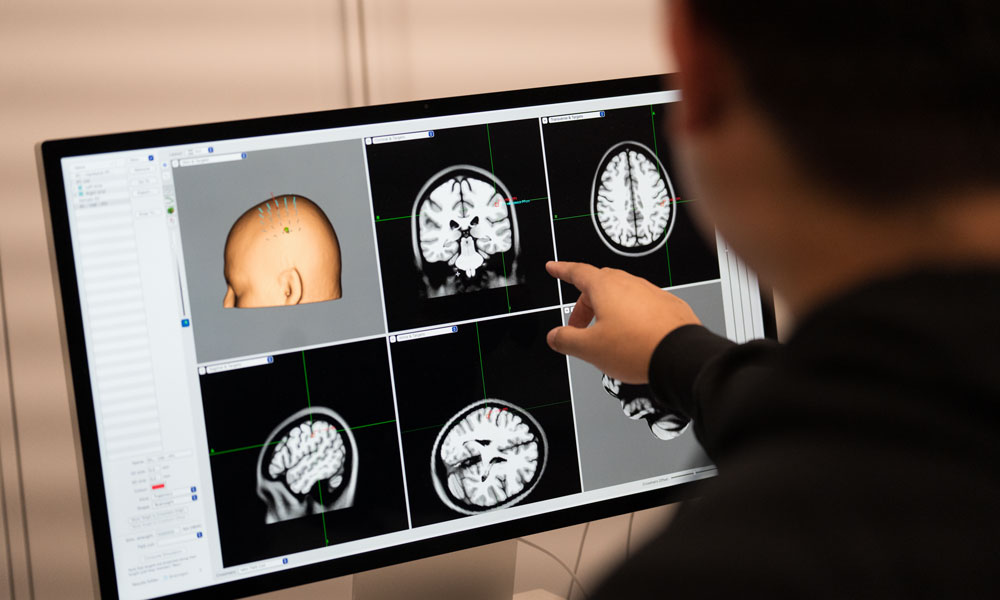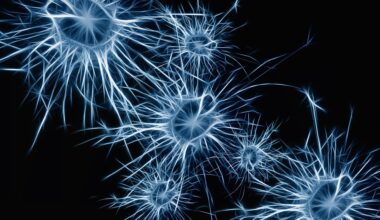Dr. Sarah Kraeutner want to put stroke recovery into the hands—and minds—of survivors.
An Assistant Professor of Psychology and member of the DMCBH, Dr. Kraeutner researches novel approaches to stroke recovery and research through her Neuroplasticity, Imagery and Motor Behaviour Lab (NIMBL) at UBC Okanagan.
“The brain’s capacity to evolve and adjust—its neuroplasticity—is fascinating,” Dr. Kraeutner says. “Consistent mental and physical exercises encourage change in the brain. Essentially, the potential to reshape your brain, either positively or negatively, lies in your hands.”
This is especially important as it relates to stroke recovery. As health care improves and research evolves in Canada, so do the outcomes following a stroke. According to Government of Canada statistics, the mortality rate from stroke was 38 per 1,000 in 2002/03 but declined to 28.1 a decade later.
Further, more than two-thirds of survivors likely have some lasting disability. The Heart and Stroke Foundation estimates that half of all Canadians living with stroke need help with daily activities like eating, bathing and getting dressed.
Stroke is also one of the 10 most expensive causes of acute care hospitalization in Canada, costing the Canadian economy a staggering $3.6 billion per year.
Dr. Kraeutner’s mission is to explore motor learning, understanding how we acquire and refine motor skills—from the simple act of picking up your coffee cup to mastering a musical instrument. More precisely, her team aims to accelerate the relearning of these skills following brain injuries, especially strokes.
“If you have a stroke in an area of the brain that controls function or helps you learn something, then moving is going to be quite difficult,” Dr. Kraeutner explains. “The severity of the stroke depends on where the brain was damaged and how much was compromised. That’s what causes the motor impairments we see after stroke, like loss of speech, movement and memory.”
She adds: “I study how we learn skills and what happens in the brain when we learn those skills. My niche, if you will, is how can we leverage mental practice—the rehearsal of a movement in your mind.”

Dr. Sarah Kraeutner’s work inside NIMBL bridges theoretical research and tangible health outcomes by testing and refining interventions for stroke recovery. Photo by Margo Yacheshyn
Known as passive forms of practice, these activities require a conscious effort but not a physical one—which is key for stroke survivors who have lost some ability to move.
“Our goal is how to leverage these passive forms of learning to improve performance or improve learning.”
These include imagined practice, where individuals visualize actions in their minds, and action observation, which involves watching others perform specific tasks.
One of Dr. Kraeutner’s research areas is understanding how the brain’s hemispheres communicate during different forms of practice. That’s where Dr. Kraeutner and her team of postdoctoral fellows, graduate students, undergraduate volunteers and technicians begin their work. They use non-invasive brain stimulation to measure brain function. They look for changes and record muscle activity.
Then they analyze data and walk subjects through different combinations of training to determine what methods produce the best results. Some of her other research examines how motor imagery affects confidence in performing new tasks.
“[Dr. Kraeutner] is a superstar….She’s going to make a huge impact on the community. She’s always challenging assumptions about past results because you can’t solve problems this complicated with one approach.”
-dR. lARA BOYD
Dr. Kraeutner is also working on helping patients practise at home by making treatment as engaging as video games. As part of her ongoing collaboration with Dr. Lara Boyd and the Brain Behaviour Lab at UBC Vancouver, they’re researching “gamified” rehabilitation techniques after stroke.
They’re collaborating with an interdisciplinary team specializing in physiotherapy, psychology, game design and data science on the research. In front of a camera that captures a patient’s movements on a screen, subjects wear special controllers to grab asteroids and throw them into the sun. The game gets progressively more difficult as the individual masters it.
It was Dr. Boyd who initially inspired Dr. Kraeutner to pursue stroke recovery and brain research as a postdoctoral fellow in the Brain Behaviour Lab.
“She’s a superstar,” says Dr. Boyd. “Brilliant and determined. She’s going to make a huge impact on the community. She’s always challenging assumptions about past results because you can’t solve problems this complicated with one approach.”
There is great hope the game research will add a new layer to recovery. For stroke survivors, games could provide a non-invasive approach to kick-start the return of lost skills. Dr. Kraeutner says the two forms of practice can stimulate the same neural pathways as actual physical movement, offering a unique avenue for motor learning and relearning.
NIMBL—the Neuroplasticity, Imagery and Motor Behaviour Lab—aims to bridge the gap between theoretical research and tangible health outcomes by testing and refining these interventions.
“It’s empowering to know that our brain has the innate capacity to rewire itself, offering hope and new possibilities for stroke recovery and beyond,” Dr. Kraeutner says. “This potential for change, driven by our actions and thoughts, is what continually inspires my work.”
A version of this story was originally published on the UBC Okanagan News website.


